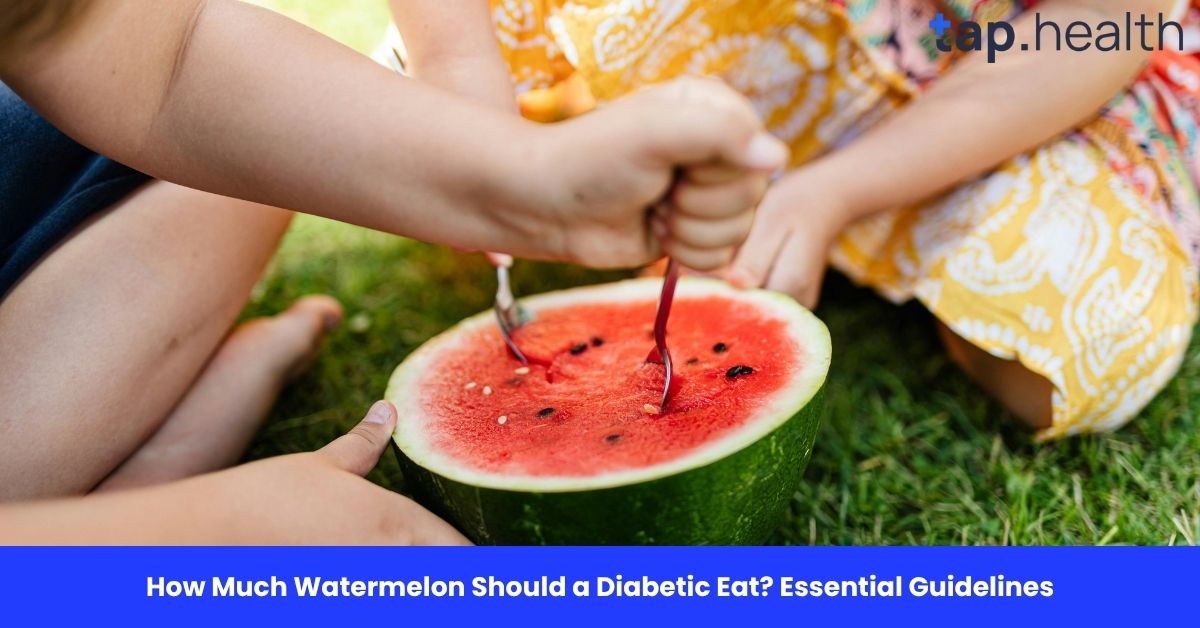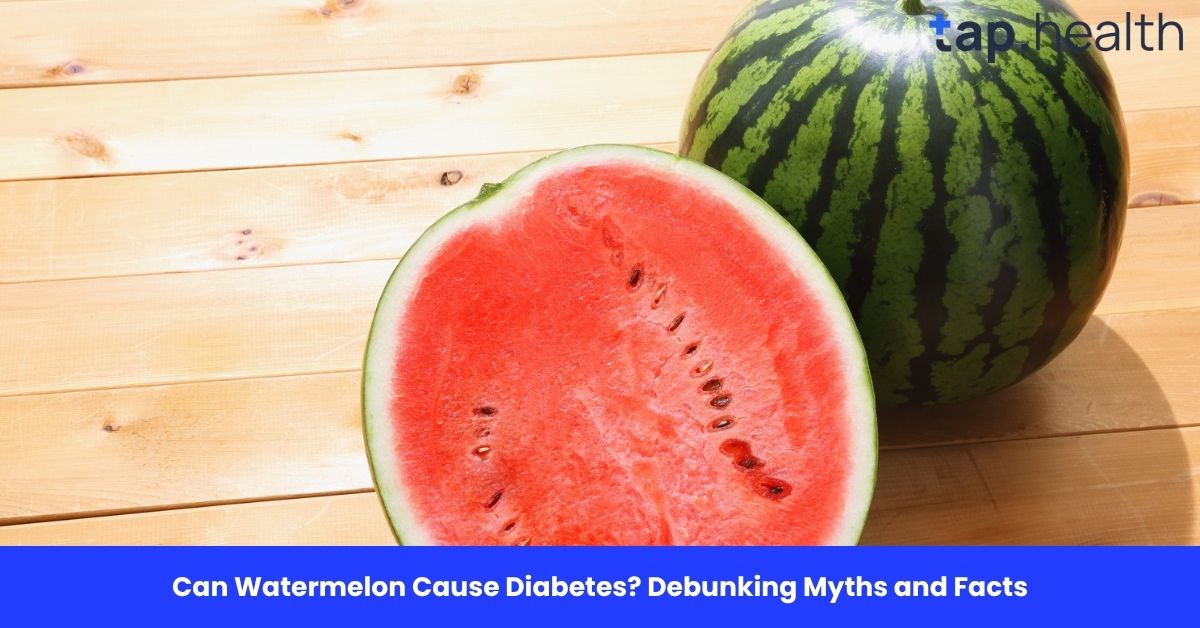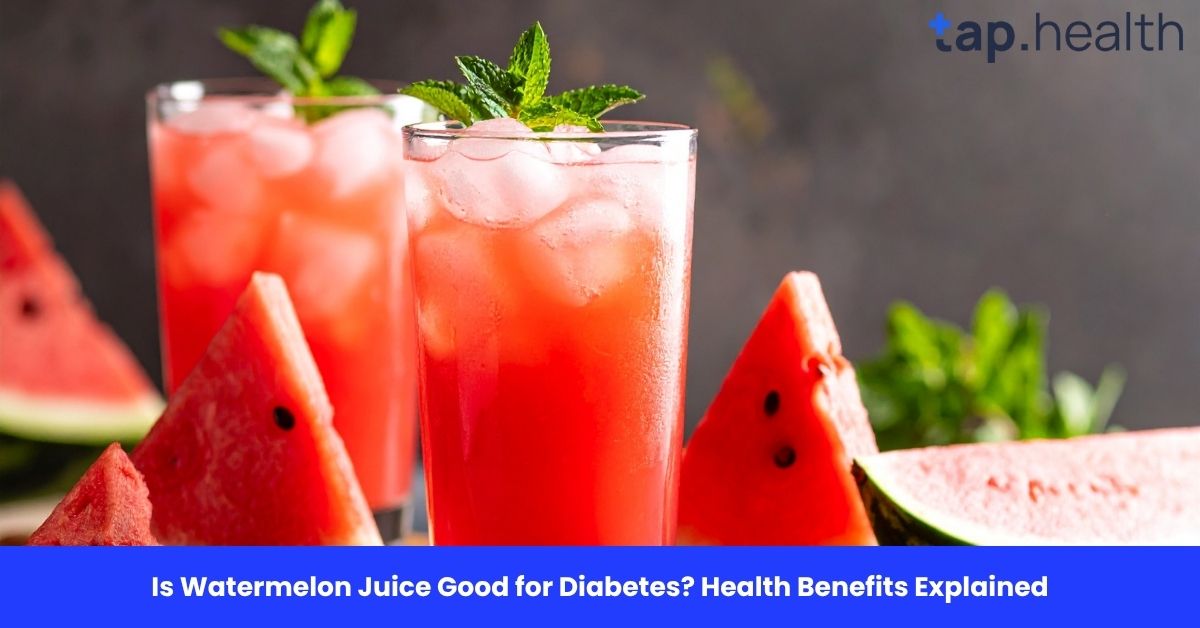Watermelon, with its refreshing taste and high water content, is a beloved fruit, especially in the hot summer months. But for individuals living with diabetes, the question arises: How much watermelon should a diabetic eat? While watermelon is a natural, healthy fruit, it is crucial for diabetics to manage their portion sizes due to its natural sugars and impact on blood sugar levels.
In this comprehensive guide, we will explore the nutritional benefits of watermelon, its glycaemic index, the optimal portion size for diabetics, and tips on how to enjoy watermelon safely while managing blood sugar levels.
Understanding Diabetes and Its Impact on Food Choices
Before we dive into how much watermelon is safe for diabetics, it’s essential to understand how diabetes affects food choices. Type 2 diabetes, the most common form, occurs when the body either becomes resistant to insulin or does not produce enough insulin. This leads to elevated blood sugar levels, which can cause a range of complications over time, including heart disease, nerve damage, and kidney issues.
Managing blood sugar is at the core of diabetes treatment, which is why dietary choices are crucial for diabetics. Foods that cause sharp spikes in blood sugar can exacerbate symptoms and complicate diabetes management. For this reason, understanding the glycaemic index (GI) and glycaemic load (GL) of foods like watermelon is essential for diabetics to make informed decisions about their diet.
What is Watermelon?
Watermelon is a large, juicy fruit that belongs to the cucurbitaceae family, commonly consumed in fresh slices or as juice. It is made up of about 90% water, which makes it incredibly hydrating and low in calories. Watermelon is also rich in vitamins A, C, and B6, and provides important minerals like potassium and magnesium.
The fruit is naturally sweet, containing sugars like fructose and glucose, which raise concerns for diabetics, as excessive sugar intake can lead to blood sugar imbalances. However, watermelon’s high water content and relatively low glycaemic load make it a moderate choice for diabetics when consumed in appropriate portions.
Nutritional Value of Watermelon (per 100 grams):
- Calories: 30
- Carbohydrates: 7.6 grams
- Sugar: 6.2 grams
- Fibre: 0.4 grams
- Protein: 0.6 grams
- Vitamins and minerals:
- Vitamin C: 8.1 mg (about 10% of the daily requirement)
- Vitamin A: 28 µg
- Potassium: 112 mg
- Magnesium: 10 mg
While watermelon is low in calories and contains a moderate amount of sugar, its primary concern for diabetics is the glycaemic index and glycaemic load, which we’ll explore further.
Glycaemic Index (GI) and Glycaemic Load (GL) of Watermelon
Glycaemic Index (GI)
The glycaemic index (GI) measures how quickly a particular food raises blood sugar levels. Foods with a high GI (70 or above) cause rapid spikes in blood glucose, while foods with a low GI (55 or below) are digested more slowly, leading to a slower rise in blood sugar.
Watermelon has a GI of 72, which places it in the high GI category. This suggests that watermelon can cause a rapid increase in blood sugar levels when consumed in large portions. However, it’s essential to consider glycaemic load (GL), which provides a more accurate picture of how a food affects blood sugar based on the actual portion size.
Glycaemic Load (GL)
The glycaemic load (GL) is a measure of how much a food will raise blood sugar levels, factoring in both its GI and the amount of carbohydrates it contains in a typical portion. The GL is a more practical measure for assessing the impact of food on blood sugar.
Watermelon has a low glycaemic load (about 5 for a 100-gram serving), which means that while it has a high GI, its overall impact on blood sugar is relatively modest when consumed in smaller portions.
How Much Watermelon Should a Diabetic Eat?
While watermelon’s glycaemic index suggests it can raise blood sugar levels quickly, its glycaemic load is relatively low. Therefore, moderation is key when consuming watermelon. The following recommendations can help diabetics enjoy watermelon without negatively impacting blood sugar levels:
1. Portion Control
The ideal portion size for watermelon for a diabetic is about 100 grams (roughly half a cup of diced watermelon). This portion provides about 30 calories, 7.6 grams of carbohydrates, and 6.2 grams of sugar, with a glycaemic load of about 5. This portion is unlikely to cause significant blood sugar spikes, especially if consumed in combination with other foods that slow down sugar absorption.
2. Serve with Protein or Healthy Fats
To further stabilise blood sugar levels, pair watermelon with a source of protein or healthy fats. Foods like Greek yogurt, almonds, or a small portion of cheese can help slow the absorption of sugars from watermelon, reducing the likelihood of a blood sugar spike.
3. Avoid Drinking Large Quantities of Watermelon Juice
Watermelon juice, while hydrating, is concentrated and lacks the fibre that helps slow sugar absorption. Juicing watermelon removes much of its fibre, which means that drinking large quantities of watermelon juice can cause a more rapid spike in blood sugar levels. If you want to enjoy watermelon juice, limit the portion to around 150 ml (about half a glass), and consider diluting it with water.
4. Frequency of Consumption
For diabetics, eating watermelon once or twice a week is generally safe, as long as it is consumed in moderation and as part of a balanced diet. However, eating it more frequently or in large amounts may interfere with blood sugar control.
Benefits of Watermelon for Diabetics
While portion control is essential, watermelon offers several benefits for diabetics when consumed appropriately:
1. Hydration
Since watermelon is made up of 90% water, it is excellent for staying hydrated, especially in hot climates. Proper hydration is important for diabetics as it helps maintain healthy kidney function and supports overall metabolism. Watermelon’s hydrating nature can also help dilute blood sugar concentrations in the body.
2. Rich in Antioxidants
Watermelon is a great source of lycopene, an antioxidant that has been shown to reduce inflammation and improve heart health. Diabetics are at a higher risk of heart disease, and incorporating foods rich in antioxidants like watermelon can help protect the cardiovascular system.
3. Low in Calories
Watermelon is a low-calorie fruit, making it an excellent snack choice for diabetics who are managing their weight. Obesity is a significant risk factor for type 2 diabetes, so low-calorie foods like watermelon can be included in a weight management plan.
4. Supports Digestion
Watermelon contains small amounts of fibre, which is beneficial for digestion. While watermelon is not a high-fibre fruit, it can still contribute to overall digestive health and regular bowel movements, which is essential for maintaining blood sugar stability.
Risks of Eating Too Much Watermelon for Diabetics
While watermelon has numerous health benefits, consuming too much can lead to the following risks:
1. Blood Sugar Spikes
Because watermelon has a high glycaemic index, consuming large portions can lead to rapid spikes in blood sugar levels. Diabetics should be cautious and avoid overeating watermelon, especially on its own, to prevent sharp increases in blood glucose.
2. Lack of Satiety
Watermelon is low in fibre and protein, which are essential for feeling full and satisfied after meals. If you eat too much watermelon, you might find yourself hungry again soon, which could lead to overeating or unhealthy snacking later on.
3. Overconsumption of Sugar
Even though watermelon is a naturally occurring fruit sugar, it still contains 6 grams of sugar per 100 grams. Eating too much fruit sugar in one sitting could increase overall carbohydrate intake, potentially affecting blood sugar control.
Also Read this: How Many Calories in a Whole Watermelon?
Key Takeaways
- Moderation is crucial when consuming watermelon for diabetics due to its high glycaemic index and moderate sugar content.
- The ideal portion size for watermelon is 100 grams, which provides about 30 calories and 6.2 grams of sugar.
- Pair watermelon with protein or healthy fats to help regulate blood sugar levels.
- Avoid large servings of watermelon juice as it lacks fibre and can lead to rapid spikes in blood sugar.
- Watermelon offers significant benefits for hydration, heart health, and weight management, but consuming too much can lead to blood sugar spikes.
FAQ: How Much Watermelon Should a Diabetic Eat?
Q: Can diabetics eat watermelon every day?
While it’s best to consume watermelon in moderation, eating it once or twice a week is generally safe for diabetics. Make sure to stick to appropriate portion sizes and pair it with other foods.
Q: How much watermelon can a diabetic eat at once?
A diabetic can safely eat 100 grams (half a cup) of watermelon per serving. This portion provides approximately 30 calories and 6.2 grams of sugar.
Q: Is watermelon juice safe for diabetics?
Watermelon juice is not ideal for diabetics in large quantities, as it lacks fibre and can cause rapid blood sugar spikes. If consumed, limit it to 150 ml and consider diluting it with water.
Q: Does watermelon spike blood sugar in diabetics?
Watermelon can cause a moderate spike in blood sugar due to its high glycaemic index, but its low glycaemic load means that moderate portions (100 grams) won’t cause a major blood sugar spike.
Q: Can diabetics eat watermelon at night?
Yes, diabetics can eat watermelon at night in moderation. Just be mindful of portion sizes, and pair it with a protein or fat to help regulate blood sugar levels.
Q: What are the benefits of watermelon for diabetics?
Watermelon is hydrating, low in calories, rich in antioxidants like lycopene, and can support heart health and digestion—benefits that are important for managing diabetes.


